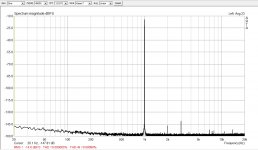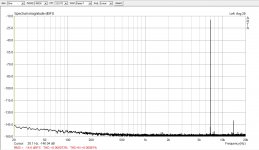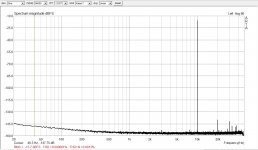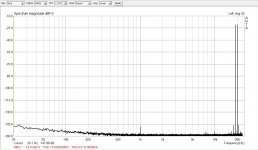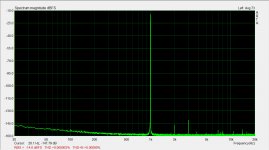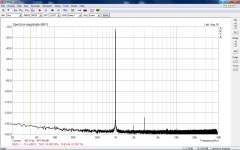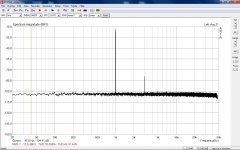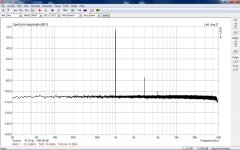Hi
Is there a message in this thread describing the interaction of the individual parts?
Which circuit boards do I need to achieve what?
To the explanation:
I have a music server with USB port. I'm looking for a DAC. I have both (HD)-PCM and DSD files.
Thank you!
Some how this message i have not seen.
Both DAC's the USB DAC V1.0 and the V1.2 can be used for that.
But for the USB DAC V1.2 you also get Isolated USB so that you do not get current loops through the USB section.
Also it have reclock and it has build in volumecontrol in hardware.
I wrote you few weeks ago..Some how this message i have not seen.
Please, spend some time and make one post with all informations about new DAC.. even better, update your shoping site..
I think that would be much easier for future buyers, and for you..
I wrote you few weeks ago..
Please, spend some time and make one post with all informations about new DAC.. even better, update your shoping site..
I think that would be much easier for future buyers, and for you..
Hi vulejov.
Yes it is a good idea.
Distortion is very low. My equipment cannot measure lower than 0.0008%
And i am waiting on new equipment to arrive.
But just the specification here again.
Specification on the USB DAC mainboard.
- Powersupply: +5.5V 340mA, +15V 10mA, -15V 1mA.
- Samplerate converter SRC4392 on I2S, SPDIF RCA and Optical SPDIF
- Samplerate converter output is 192KHz 24Bit.
- I2S and RCA SPDIF to 192KHz 24 Bit.
- Optical to 96KHz and 24Bit
- USB to 384KHz 32bit and DOP 128
- USB is galvanic isolated and feed directly to AK4490
- All signals are reclocked
- FPGA for glue logic
- Own microcontroller for controlling different types of Volume control
- Optional control of preamp through FFC 30 pin connector.
- 3 SERCOM ports (SPI,I2C or UART per SERCOM), IR, encoder and 6 GPIO, +5, +3.3V through the DDC connector
- Firmware for using DAC with OLED display.
- Same formfactor as the USB DAC V1.0
Hi Sonny,
Will it do Native DSD up to 256?
Thanks
Do
Hi Sonny,
Does the new DAC do DSD256 Native? Will it work with the preamplifier?
Thanks
Do
Even I was curious to know if it does DSD 256 Native. I skimmed through the pages and found the below info in post #1184. But Sonny's specs doesn't confirm that

Also he confirmed in the same page his new dac is backward compatible.
USB:
USB is galvanic isolated now. We use a DC/DC converter from Murata, but it can be feed with an external +5V source that is isolated. J11 is the input for that voltage. J13 is a control signal for an external source if you want’s to turn it off. Data rates is still the same as for the version 1.0 -> 384KHz/32Bit and DoP 128/DSD 256.
#1395
Maybe Sonny's post #1395 gives the answer to your question?
BR Erik
hi sonny
how do I make 5v usb power by external source ?
Maybe Sonny's post #1395 gives the answer to your question?
BR Erik
Joseph, I remember you did some nice measurements of the first discrete output stage (AK4490 USB Dac with dsd support.). It would be interesting to see how the new one fares, could you run some analyses for us?
I have re-run some tests recently. The setup is:
Mirand V1.1 dac, modified, + equipped with the new output shield with SITO discrete opamps, in a full differential configuration
(balanced out from Mirand into balanced in of the EMU1616m card)
These plots below are the 'sweet spot', least distortion graphs.
The dac was driven at -10 dbFs level, at 384kHz / 96kHz sample rates.
The EMU card is 'full open' on it's input, +4dB prof. level setting, no attempt to normalize levels - from here there is an extra 4.6dB level drop.
At higher levels the distortion is 'higher'. ~.00045% at 0dB; 0.0002% from -2dB; 0.00012 -13 % at -5dbFs generator drive level.
Attachments
Compare this performance to the RTX analyzer.. 
http://www.diyaudio.com/forums/equi...er-ak5397-ak5394a-ak4490-139.html#post5272845
http://www.diyaudio.com/forums/equi...er-ak5397-ak5394a-ak4490-139.html#post5272845
Attachments
Finally one little shot that I wished to do since long - the same test setup as before, but the Mirand dac driven in DSD, a -6db Fs 1kHz signal.
Rate is native DSD 256, (this is the old, v1.1 version), the test signal (96kHz, 24bit) is upsampled by HQplayer using poly-sinc-xtr-2s filtering and DSD7_256+ modulator
Rate is native DSD 256, (this is the old, v1.1 version), the test signal (96kHz, 24bit) is upsampled by HQplayer using poly-sinc-xtr-2s filtering and DSD7_256+ modulator
Attachments
Last edited:
I have re-run some tests recently. The setup is:
Mirand V1.1 dac, modified, + equipped with the new output shield with SITO discrete opamps, in a full differential configuration
(balanced out from Mirand into balanced in of the EMU1616m card)
These plots below are the 'sweet spot', least distortion graphs.
The dac was driven at -10 dbFs level, at 384kHz / 96kHz sample rates.
The EMU card is 'full open' on it's input, +4dB prof. level setting, no attempt to normalize levels - from here there is an extra 4.6dB level drop.
At higher levels the distortion is 'higher'. ~.00045% at 0dB; 0.0002% from -2dB; 0.00012 -13 % at -5dbFs generator drive level.
Those are exceptional results. Almost hard to believe considering this is a discrete design. Very low noise and distortion, the latter stays low at high frequencies, remarkable.
A couple of questions:
What have you modified on the DAC? Galvanic isolation for USB? (I see you have fixed the ground loop issue).
Have you tried single-ended measurements?
Hats off to Sonny, I don't see this kind of performance everyday.
Joseph,
Regarding post #1475: http://www.diyaudio.com/forums/vend...4490-usb-dac-dsd-support-148.html#post5275297
I’m a little surprised you were able to engineer a test signal at DSD 256 by using HQ Player. There is no Audio Precision analyzer made to date that can output DSD 256! And AP test equipment is very very expensive and are a reference standard.
So my question is...are your DSD measurements valid?
Best,
Anand.
Regarding post #1475: http://www.diyaudio.com/forums/vend...4490-usb-dac-dsd-support-148.html#post5275297
I’m a little surprised you were able to engineer a test signal at DSD 256 by using HQ Player. There is no Audio Precision analyzer made to date that can output DSD 256! And AP test equipment is very very expensive and are a reference standard.
So my question is...are your DSD measurements valid?
Best,
Anand.
- Home
- Vendor's Bazaar
- AK4490 USB Dac with dsd support.
